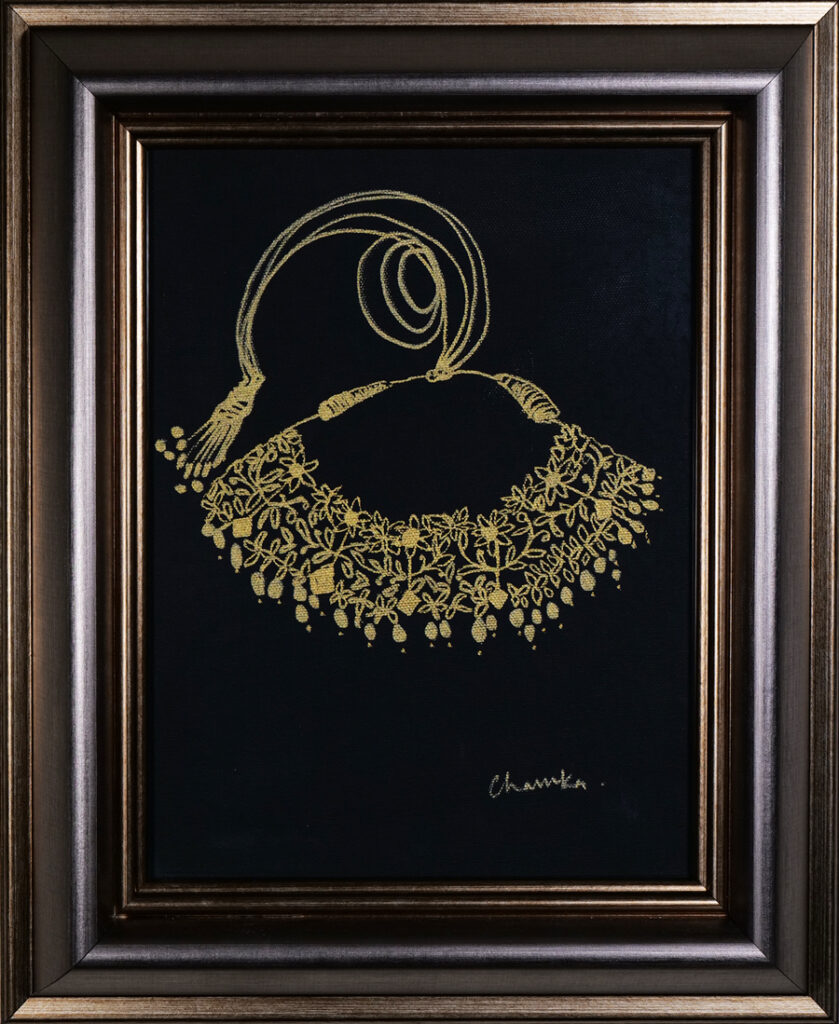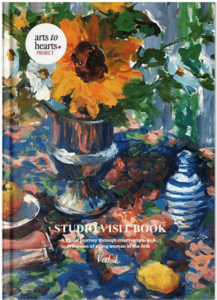
How to inventory your artwork: 5 tips that can help manage your sales


Do you know what’s fascinating about artists? How they manage their work and exhibitions so effortlessly! It’s like they’ve cracked the code to a smooth and organized work journey.
Well, here’s the secret behind their magic – inventories! These tools play a huge role in making their creative process a breeze. Though the word “inventory” might bring images of warehouses and spreadsheets, believe me for artists, it holds the key to unlocking their true potential.
They give you a neat catalog of all your available artwork, making it a breeze to respond to inquiries and manage sales like a boss. Imagine more time to create and less time spent searching for information – sounds perfect, right?
And that’s not all – inventories are like time machines! Well, sort of. When you look back at your inventory, you can see how your journey has evolved over time. It’s a real eye-opener and helps you set new goals for the future.
So, whether you’re a seasoned artist or just starting, we’ve found you five tips to inventory your artwork. These tips will give you the freedom to create, explore, and share your art with the world – all while keeping that happy balance of creativity and order in your creative space.
Keep all your artwork saved in a catalog
Creating a catalog for your artwork is the backbone of effective inventory management. This essential step brings many benefits that streamline your journey and ensures your work is well-organized and easily accessible.
A well-structured catalog serves as your treasure map, offering a clear overview of your entire collection. It allows you to easily locate specific pieces whether you need them for personal use or when preparing for exhibitions and sales. A catalog enhances the professionalism of your art practice, showing your dedication to detail and easy tracking.
When cataloging your artwork, be careful in recording information. Each entry should include the title of the piece, its dimensions (size), the medium or materials used, and the date of creation. These details help you identify individual artworks and offer value when submitting your work to curators, collectors, and potential buyers.
How to catalog your artwork?
Try using digital apps and platforms for a smoother experience. Digital platforms like ATH inventory enable you to create, manage, and update your catalog effortlessly. This inventory offer features like tagging, categorizing, and image uploads, making maintaining an organized inventory easier. Use these technological advancements to streamline your artwork management and continue your work with peace of mind.

Digital Documentation and Photography
Capturing your artwork through digital documentation and photography is helpful in maintaining a well-documented inventory. These images serve as visual records, preserving the beauty and freshness of your work for years to come.
Digital documentation complements your comprehensive catalogue by visually representing each artwork. High-quality images allow you to admire your work at any time and enable potential buyers and galleries to appreciate your art without physical presence. Furthermore, digital documentation becomes helpful for online portfolios, social media promotions, and submission to art competitions.
Moreover, photographing your artwork requires attention to detail to ensure accurate representation. Use good lighting to show colours and textures authentically. Experiment with different angles to capture the uniqueness of each piece. Consider using a tripod for larger artworks to maintain stability and avoid distortions.
Remember, a well-photographed artwork communicates its essence and allure to art lovers worldwide.
How to protect your digital files?
Digital files are susceptible to loss or corruption, making protection essential. Create backups of your artwork images on reliable external drives or cloud storage platforms. This precautionary measure ensures that your precious artwork documentation remains safe and retrievable even if unexpected incidents occur.
Create a Secure Storage System for your artwork
Ensuring the physical safety of your artwork is as important as its digital counterpart. Implementing a secure storage system guarantees that your masterpieces remain pristine and protected from potential damage.
Artworks are prone to external factors like dust, light, humidity, and temperature fluctuations. A proper storage system shields your work from these elements, preserving their quality and longevity. A well-organized storage setup allows for easy access, making it a breeze to retrieve artworks for exhibitions or viewings.
Select storage solutions that suit the specific needs of each artwork. For flat artworks, consider archival portfolios or acid-free sleeves to shield them from dust and scratches. For larger pieces, sturdy flat files or custom-built racks provide safe storage. Delicate sculptures and 3D artworks benefit from padded containers or custom display cases. Opt for racks or shelves with ample spacing when storing multiple pieces to prevent accidental damage.
How to Create a Climate-Controlled Environment to inventory your artwork
Climate-controlled environments offer an additional layer of protection for delicate and sensitive artworks. These controlled spaces maintain stable temperature and humidity levels, preventing detrimental fluctuations that can harm your creations. Consider storing valuable or fragile pieces in such environments for added peace of mind.
Find an Inventory Management System
In this digital era, embracing technology can revolutionize managing your artwork inventory. An inventory management system streamlines the entire process, empowering you with efficient tools to organize, update, and access your collection effortlessly.
An inventory management system centralizes all your artwork information in one place, eliminating the need for scattered records and manual tracking. With just a few clicks, you can view and manage your entire collection, saving time and reducing the likelihood of errors. This digital approach lets you stay on top of your inventory even as your art practice evolves and expands.
Consider features catering to artists’ needs when choosing an inventory management system. Look for options that allow you to record artwork details, attach images, and categorize pieces based on themes, styles, or mediums. Some systems also offer valuable tagging capabilities, making filtering and finding specific artworks within your collection easy.
Assign titles and numbers to your work
One final and most useful tip to help artists inventory their artwork is to maintain a consistent naming and numbering system. By giving each artwork a unique and descriptive name or number, artists can easily identify and locate their pieces within their inventory.
Here’s an example that can help you create consistent naming and numbering system:
- Use Descriptive Names: Give each artwork a descriptive name that mentions its subject, style, or inspiration. This will make it easier to identify the piece at a glance without having to rely solely on images.
Example:

- Assign Unique Numbers: besides a descriptive name, assign a unique number to each artwork. This can be a sequential number or a combination of letters and numbers.
- Record Details: Alongside the name and number, include relevant details such as the creation date, medium, dimensions, and any other information that might be useful for tracking and managing the artwork.
Example:
Title: “Galabandi Haar”

Artwork Number: SQ1222561
Medium: Gold Acrylic on black canvas
Dimensions: 9 × 12 inches
Creation Date: 2022
By using a consistent naming and numbering system, you can quickly search, organize, and retrieve information about your artwork. This system not only streamlines the inventory process but also ensures that each artwork is uniquely identified, making it easier to keep track of sales, exhibitions, and other art-related activities.
In conclusion, by creating an inventory for your artwork, you can increase productivity and make informed decisions to maximize your earnings. We hope the tips shared today empower you to take control of your art inventory confidently and easily.
However, we understand that managing your artwork can still be challenging, and if you ever feel overwhelmed or stressed, remember that you don’t have to do it alone. ATH offers an advanced inventory management system specifically designed for artists like you.
Our tool streamlines the process, saving you time and effort, so you can focus on what truly matters–your creations. Reach out to us anytime, and let our inventory management system ease your workload, making your journey even more fulfilling and rewarding.
Ready to get organized? Sign Up.
So, that’s all for today, but if you ever need more guidance on managing your business, overcoming burnout, or seeking tips to thrive as an emerging artist, we’ve got you covered. Tune into our ATH podcasts, where we discuss everything from business strategies to nurturing your soul.
Our podcasts are filled with valuable insights and answers to your most pressing questions. So, stay inspired, keep creating, and join us on the ATH platform to explore a world of endless possibilities for your growth.
Until then, happy creating, and let your creativity soar!


















Comments 58